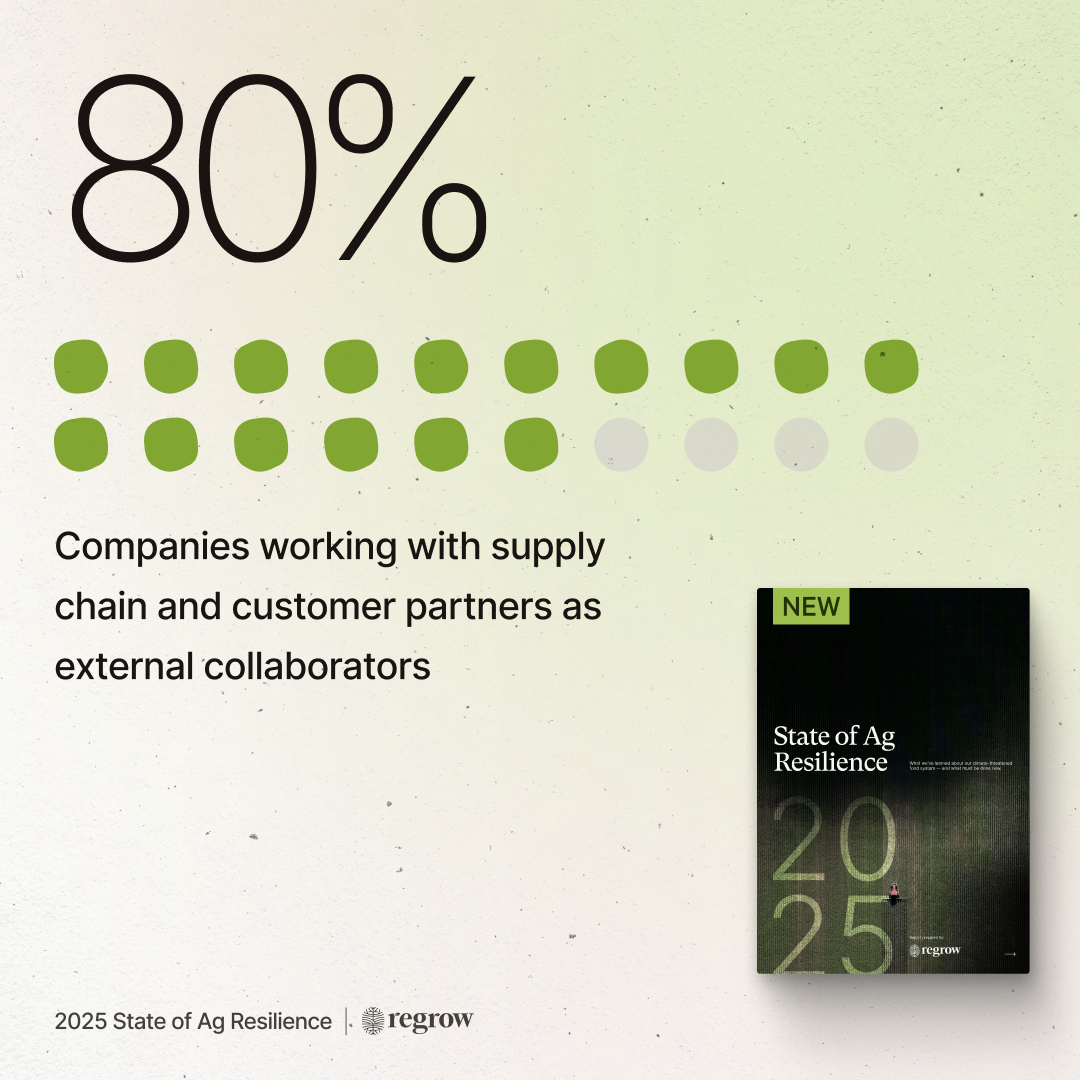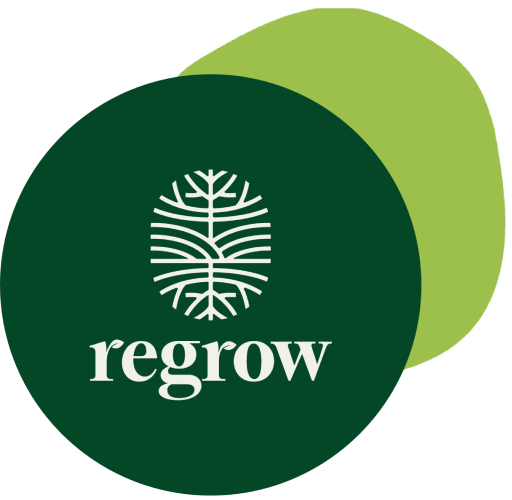Regenerative agriculture programs don’t happen in a vacuum. They rely on a complex web of relationships—across internal teams, supply chain partners, and regional stakeholders—to succeed.
From the companies surveyed in our recent State of Ag Resilience Report, one insight stood out: the most successful programs are collaborative by design. Nearly 70% of companies reported that ownership of sustainability initiatives is shared across multiple departments, and 80% are working with supply chain and customer partners to co-develop and scale regenerative agriculture programs.
In today’s volatile climate, collaboration is a strategic imperative.

Breaking down silos
Agriculture resilience doesn’t belong to a single team. Efforts touch procurement, sourcing, finance, operations, and marketing. Programs that stay siloed—owned by one department with limited buy-in from others—are unlikely to achieve meaningful scale.
To build lasting, impactful regenerative programs, companies must align incentives across internal teams. That means shared accountability for success—and shared investment in outcomes.
The same is true for external partners. As Vaughn Duitsman, Director of Sustainability at Bartlett, put it:
“Getting key stakeholders together throughout the value chain is really important. And more of that is needed…it takes both sides. It's not a one-way street. The number one moment where resilience really struck me was when our biggest customer came to us and said, ‘We need this for our business.’”
When partners across the value chain recognize their mutual stake in sustainability, the opportunity for resilience grows exponentially.
Two paths for collaboration
Supply chain and landscape level partnerships
There’s no one-size-fits-all model for collaboration. The companies we surveyed are pursuing different types of partnerships based on their business needs—but the most effective strategies involve both:
- Supply Chain Partners: These collaborators are engaged across the value chain, working to reach farmers within one supply chain and implement regenerative practices. In many cases, they also co-invest in program development, offering additional resources and scale.
- Landscape Partners: These are organizations sourcing from, or working within, the same regions. By working together across brands or sectors, these partners build resilience at the landscape level—not just within supply chains. This kind of regional coordination is essential. It allows companies to address shared risks, support whole-farm transformation, and strengthen the broader agricultural ecosystem.
Alignment accelerates ROI
When companies coordinate efforts across stakeholders—from procurement to finance to field teams—they increase the chances of achieving and proving ROI. Internally, this ensures that sustainability initiatives are embedded in strategic, operational, and financial decision-making. Externally, it unlocks investment and shows outcomes beyond individual company goals.
Programs built on collaboration are stronger, more resilient, and better positioned to scale.
Learn more in our 2025 State of Ag Resilience.



